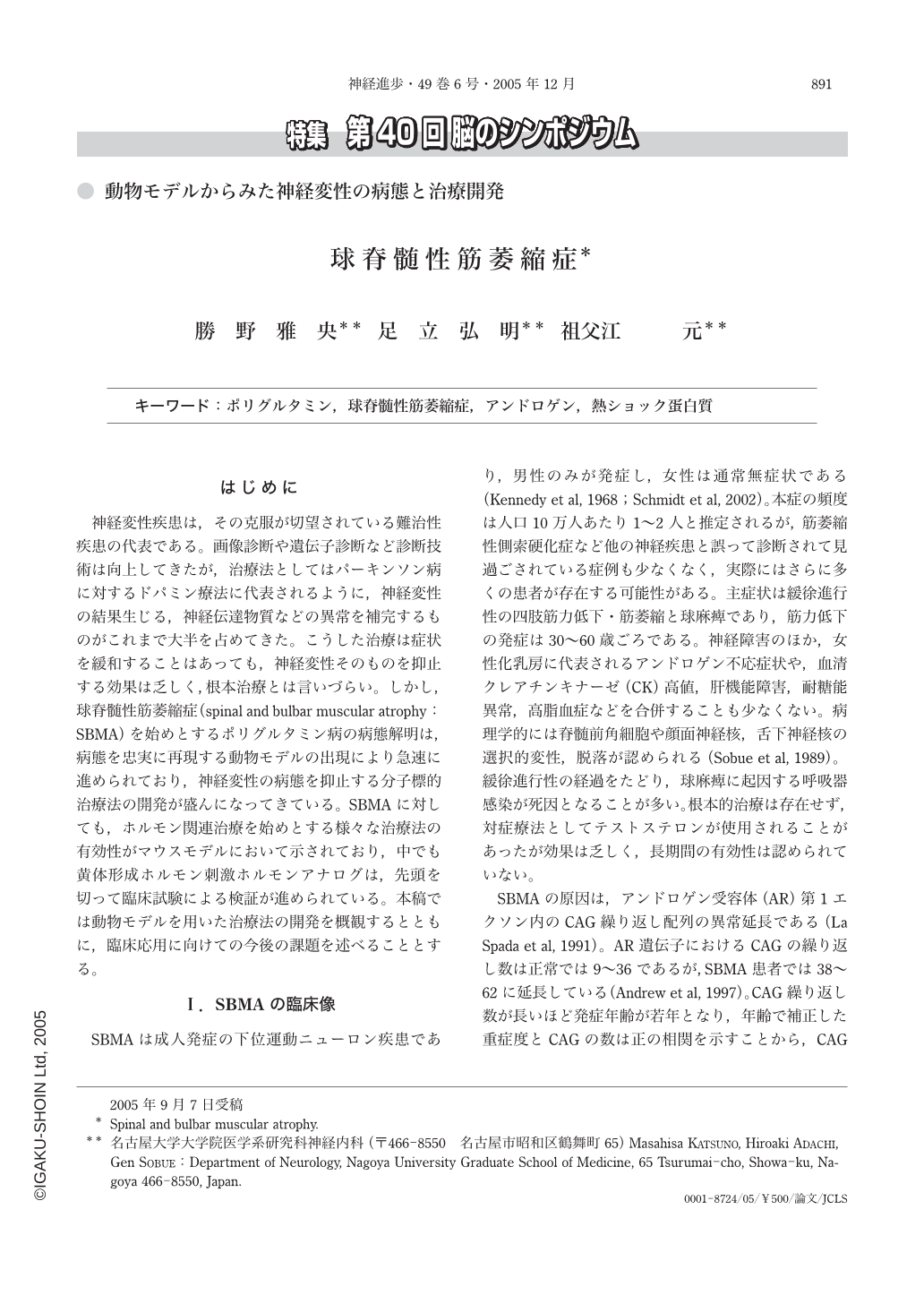Japanese
English
- 有料閲覧
- Abstract 文献概要
- 1ページ目 Look Inside
神経変性疾患は,その克服が切望されている難治性疾患の代表である。画像診断や遺伝子診断など診断技術は向上してきたが,治療法としてはパーキンソン病に対するドパミン療法に代表されるように,神経変性の結果生じる,神経伝達物質などの異常を補完するものがこれまで大半を占めてきた。こうした治療は症状を緩和することはあっても,神経変性そのものを抑止する効果は乏しく,根本治療とは言いづらい。しかし,球脊髄性筋萎縮症(spinal and bulbar muscular atrophy:SBMA)を始めとするポリグルタミン病の病態解明は,病態を忠実に再現する動物モデルの出現により急速に進められており,神経変性の病態を抑止する分子標的治療法の開発が盛んになってきている。SBMAに対しても,ホルモン関連治療を始めとする様々な治療法の有効性がマウスモデルにおいて示されており,中でも黄体形成ホルモン刺激ホルモンアナログは,先頭を切って臨床試験による検証が進められている。本稿では動物モデルを用いた治療法の開発を概観するとともに,臨床応用に向けての今後の課題を述べることとする。
Spinal and bulbar muscular atrophy(SBMA)is an adult-onset motor neuron disease affecting only males. Major symptoms of SBMA are weakness, atrophy, and fasciculations of bulbar, facial and limb muscles. The onset of weakness is usually between 30 and 60 years, and the progression of neurological symptoms is usually slow. Life-threatening respiratory tract infection often occurs in the advanced stage of the disease. No specific therapy for SBMA has been established.
The molecular basis of SBMA is the expansion of a trinucleotide CAG repeat in the androgen receptor(AR)gene, which encodes the polyglutamine(polyQ)tract. We generated transgenic mice carrying full-length AR containing 97 CAGs driven by a chicken β-actin promoter. The male Tg mice exhibited marked progressive motor impairment and nuclear accumulation of mutant AR, but neurological phenotypes were not observed or far less severe in the females. Leuprorelin, an LHRH agonist that reduces testosterone release from the testis, suppressed nuclear accumulation of mutant AR, leading to rescue of motor dysfunction in the male SBMA mice.
Our studies have also indicated several candidates of therapeutics for SBMA. Selective inhibition of HSP facilitates proteasomal degradation of pathogenic AR, leading to improvements of phenotypes in the SBMA mice. Oral administration of sodium butyrate, a histone deacetylase inhibitor, resulted in improvement of neurological dysfunction in the SBMA mouse model, although its therapeutic dose range is narrow.
For clinical application of therapeutic strategies emerging from animal studies, it is fundamental to investigate appropriate biomarkers that can be used as surrogate endpoints in clinical trials of candidate drugs.

Copyright © 2005, Igaku-Shoin Ltd. All rights reserved.


